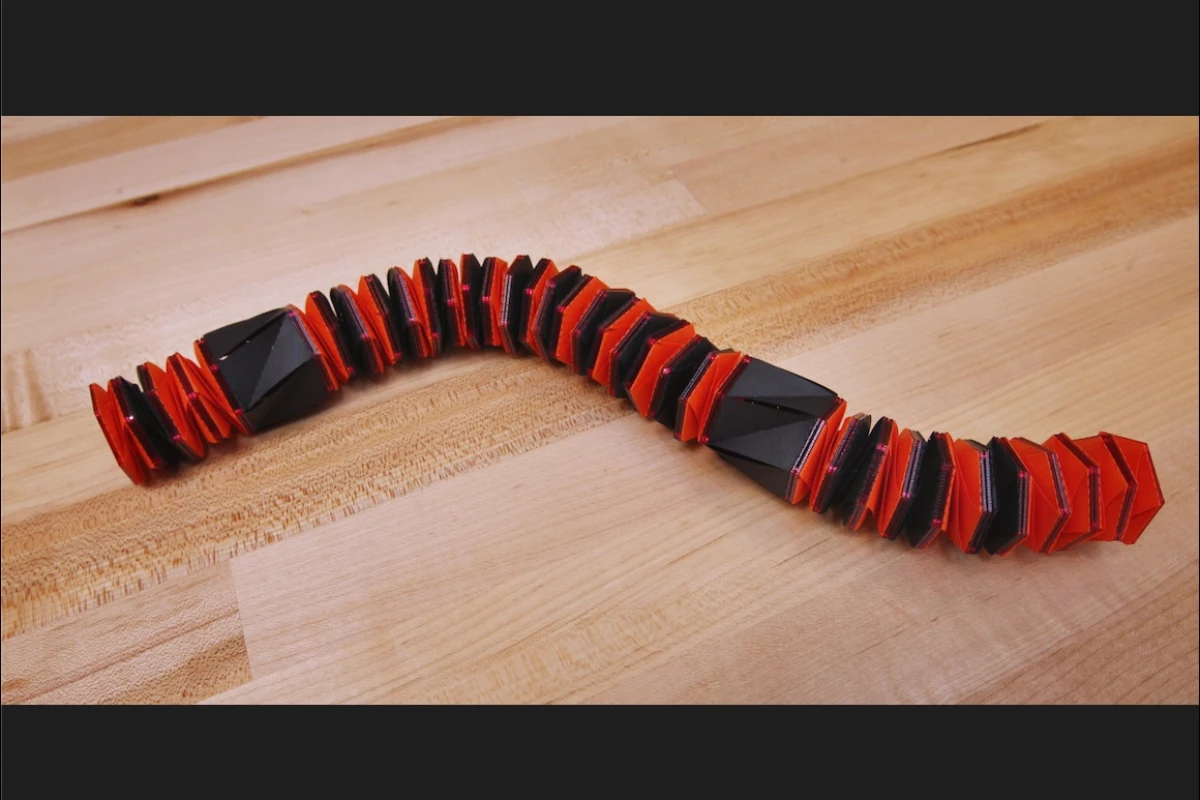If a soft-bodied robot uses rigid actuators to move its body, then it isn't really soft now, is it? An experimental new caterpillar-inspired bot gets around that conundrum by using soft, collapsible origami segments to squirm and steer its way into our hearts.
Known as the Robotopillar, the device was created via a collaboration between engineers at Princeton and North Carolina State universities.
As is the case with other such serpentine robots we've seen recently, it (or its descendants) may someday find use in applications such as searching for survivors trapped under rubble at disaster sites, or possibly even exploring the surface of other planets.
Its modular body is made up of a row of magnetically linked segments. These segments can separate from one another and move around as a collaborative "swarm" if need be. For most applications, however, they'd stay joined together in caterpillar-like form.
The PET (polyethylene terephthalate) skin of each cylindrical segment features a Kresling-type origami folding pattern. In a nutshell, this pattern consists of multiple diagonal folds that allow the segment to twist down into the form of a flat disc, then expand back into the form of a cylinder.
Along each fold line are thin "control strips" of liquid crystal elastomer and polyimide, both of which are overlaid by a strip of silver nanowires connected to a power source. Applying an electrical current to that nanowire network causes it to heat up, in turn heating the control strips.
The liquid crystal elastomer strip responds to the heat by shrinking, while the polyimide strip simultaneously responds by expanding. This combined asymmetrical reaction along the fold lines causes the segment to twist down into a disc. When the electrical current is shut off, the segment expands back into a cylinder. By sequentially activating all of the segments in this manner, it's possible to move the robot forward or backward.
That said, the nanowire "heater" strip can be activated on just one side of a segment. This causes the segment to contract on that side only. If several adjacent segments are triggered in this manner, the Robotopillar's body curves – and moves – in that direction. The scientists are now working on boosting the robot's speed and improving its steering.
A paper on the research, which was led by Princeton postdoctoral researcher Tuo Zhao, was recently published in the journal PNAS. You can see the Robotopillar in action on Vimeo.
Source: Princeton University




